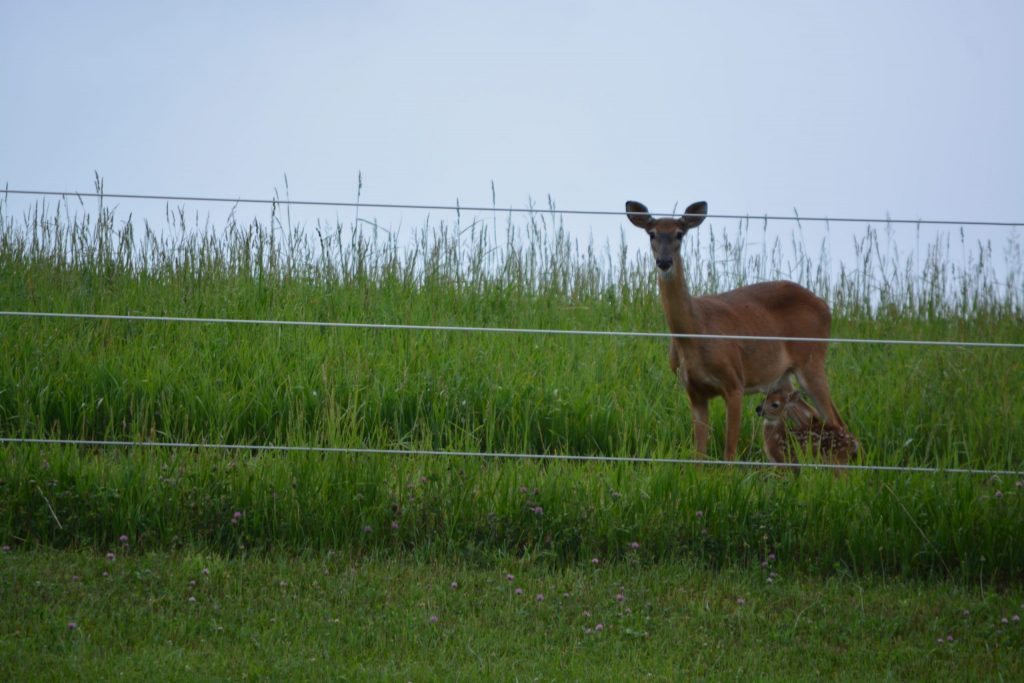Ok, so they were only long, lost siblings to us.
I’m sure it was no secret to mom or either of her twins that the other existed. But we were kind of shocked.
Way back in June, we set out on fawn catching duty. Animal capture seems fun but I find it to be the most stressful part of my job. It’s hard to explain. Handling an animal that is not meant to be handled, tagging it, collaring it, releasing it. There are so many things that can potentially go wrong. It’s hard to enjoy the experience while it is happening.
But before getting all stressed out about handling, you have to find AND catch the little buggers which is a whole other ballgame.
The evening of June 4 our capture team spotted a fawn nursing with a doe. They seized the opportunity. That full belly must have weighed him down. Fawn 6140 was now on the air.
A few days later, fat-bellied 6140’s collar went into mortality mode. After a bit of searching, he was located weak and thin in thick blackberry brambles but alive. He was left to his fate. The field crew decided to come back the next day to collect the collar from what was sure to be a dead fawn. But 6140 made a miraculous recovery and is still sporting his collar.
At about the same time 6140 was having a bad day, the capture team got lucky again. A doe was moving her fawn and crossed the road in front of them. Fawn 5906 was “on air.”
Why am I telling you all of this? There was nothing special about these 2 captures. The fawns were caught over a quarter of a mile apart. Mom had been in attendance for both. Unremarkable really.
That is until routine radio-location checks of 6140 and 5906 showed that they were hanging together. A genetic sample is taken from all captured deer. We checked the samples.
They are in fact full siblings. Now that’s remarkable!
After capture, these fawns were never seen together. It wasn’t until telemetry showed they were best buds that we had any idea they were related. Now that’s good parenting.
Does will separate her twins within a day of birth. They are on average 100 yards apart. They remain isolated from each other for the first 3 to 4 weeks of life.
These fawns were captured 4 days apart. Mom’s reaction to each capture is also textbook. When 6140 was caught, she disappeared. She was likely still close by but remained invisible. Four days later when 5906 was caught, she pitched a fit making her presence known the entire time. Research has documented that does do not begin defending fawns until they are about 4 days old and that male fawns are more likely to be defended than female fawns (I’m slightly offended by this but who can argue with evolution).
The brothers are reunited having survived their most vulnerable period of life. They can thank their mom for that.
-Jeannine Fleegle, biologist
PGC Deer and Elk Section
If you would like to receive email alerts of new blog posts, subscribe here.
And Follow us on Twitter @WTDresearch

